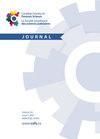Mycobiota associated with human cadavers: First record in Argentina
IF 0.2
Q4 MEDICINE, LEGAL
Canadian Society of Forensic Science Journal
Pub Date : 2018-04-03
DOI:10.1080/00085030.2018.1463131
引用次数: 5
Abstract
ABSTRACT Cadavers are an abundant source of organic matter. During their decomposition, a variety of organisms – insects, bacteria, and fungi – can feed on them. Within the ambit of forensic science, fungi have thus far received little attention. Nevertheless, the current study found that forensic mycology can be developed as a tool that provides useful evidence for case resolution. The fungal biota found growing on the surface of two cadavers with different post-mortem intervals (PMI) was examined and identified. The fungal samples were cultured and identified by morphology and molecular genetics. Fungal species such as Arthrinium arundinis, Aspergillus niger, Aspergillus terreus, Candida guillermondii, Candida lypolitica, Cladosporium cladosporioides, Chrysosporium merdarium, and Scopulariopsis brevicaulis were registered. These findings are the first contributions to forensic mycology from Argentine research. In combination with the joint investigations of forensic researchers worldwide, these results should contribute in the discussion of the use of mycology as a valid forensic tool in which fungi can provide evidence in complex cases.与人类尸体相关的真菌群:阿根廷首次记录
尸体是有机物质的丰富来源。在它们分解的过程中,各种各样的生物——昆虫、细菌和真菌——可以以它们为食。在法医科学的范围内,真菌迄今为止很少受到关注。然而,目前的研究发现,法医真菌学可以作为一种工具,为案件解决提供有用的证据。对两具不同死后间隔(PMI)的尸体表面发现的真菌生物群进行了检查和鉴定。对真菌样品进行培养,并进行形态学和分子遗传学鉴定。记录到的真菌种类有:圆木霉、黑曲霉、地曲霉、吉勒蒙念珠菌、溶孢念珠菌、枝孢子枝孢菌、金丝孢菌、短杆状孢。这些发现是阿根廷研究对法医真菌学的第一个贡献。结合世界各地法医研究人员的联合调查,这些结果应该有助于讨论真菌学作为一种有效的法医工具的使用,真菌可以在复杂的案件中提供证据。
本文章由计算机程序翻译,如有差异,请以英文原文为准。
求助全文
约1分钟内获得全文
求助全文

 求助内容:
求助内容: 应助结果提醒方式:
应助结果提醒方式:


